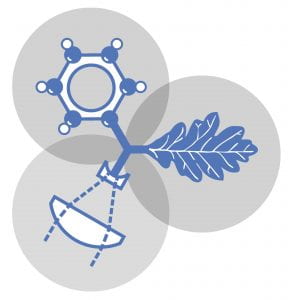
The boundaries between traditional scientific disciplines are disappearing. Physics and engineering are merging with unlike academic areas such as biology and biochemistry in an effort to answer fundamental questions in life sciences and to advance tomorrow’s frontiers in biomedicine. The interdisciplinary exchange of concepts and technologies has an immediate impact on experimental design and interpretation. More importantly, a holistic approach to scientific endeavor is emerging. Novel biological questions are addressed with newly gained physical insight, and engineering of new scientific machinery is becoming an integral part of biological experimentation.
At the Rowland, the Vollmer Lab studied label-free Biosensing with Micro- and Nanoscale Optical Resonators. They were interested in design and fabrication of photonic structures and circuits that interface, probe and manipulate biological systems on the molecular level. To reach this objective, light-matter interaction were sufficiently enhanced by photon recirculation in micro- and nano-scale cavities (ring resonators, photonic crystals, etc.) that offered ultimate Q and record-low modal volume. Once established, the technique was used to attempt to elucidate recognition, interaction and transformation of label-free biomolecules, the interplay of which give rise to various complex functions and networks that have evolved in the cell. Furthermore, access to a vast repertoire of functionality by self-assembly of purified or genetically altered biological components provided exciting opportunities for engineering of molecular-photonic device architecture.